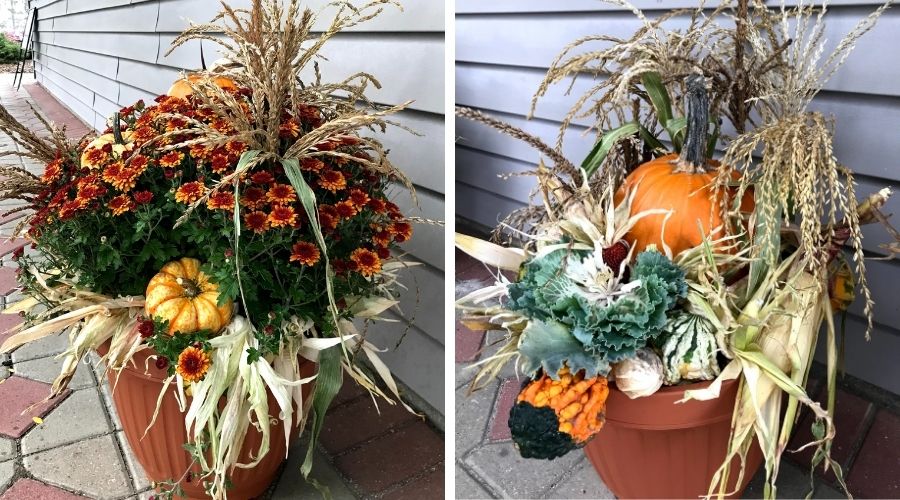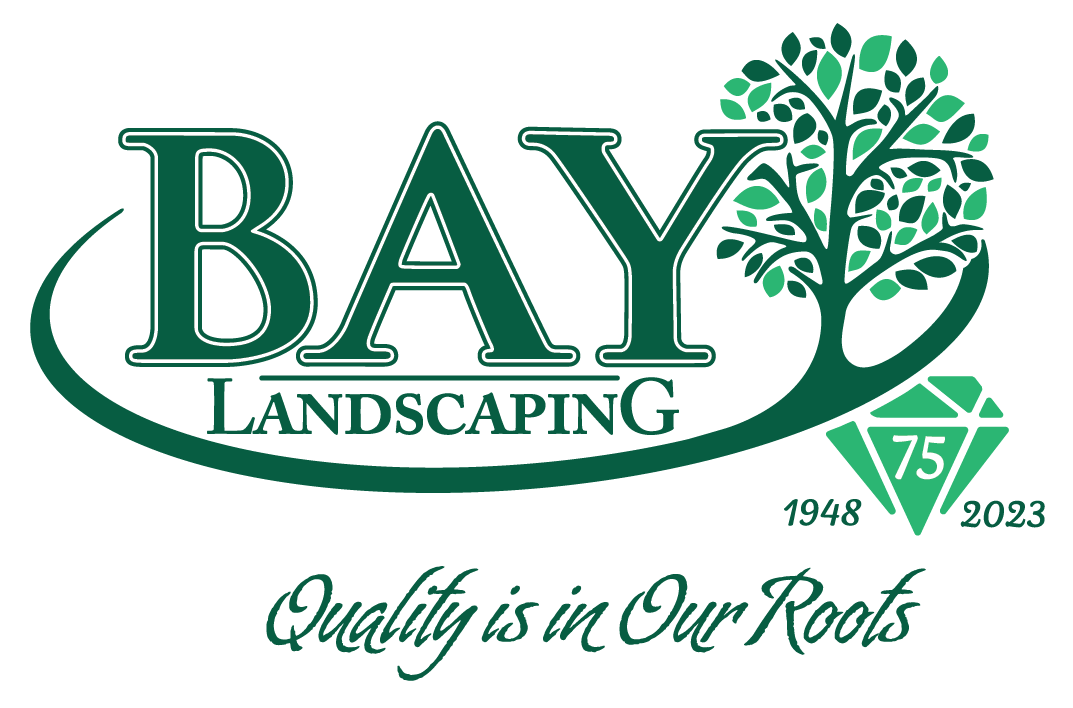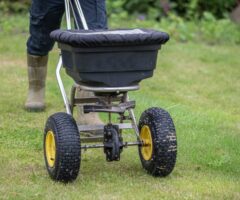As the season’s change, so too should your outdoor planters and containers. As we head into autumn in the Bay City area, the colorful annuals spilling from containers have started to fade. As temperatures dip, many will wilt and succumb to the cold. To keep your yard and garden looking good and enhance the curb appeal of your home, it’s time to switch out your summer containers for something fresh and seasonal.
Learn how to update your planters and containers for fall with these easy tips and design ideas. In just an afternoon and with a little creativity, flowers, plants, and natural materials can be transformed into a work of colorful, living art that can last well into the holiday season.

Getting Started With Fall Containers
Before you get started, think about where you want to place your fall garden planters and what kind of look you’re going for. For example, you may want to create a welcoming look for your front porch, add some excitement to your view from indoors, provide screening or privacy, or bring color to a dreary-looking area.
Pick Your Container(s)
Express your style through your container choice (such as modern, classical, or stately). From dignified to playful, planters and containers come in all sorts of sizes, shapes, and styles.
The most important thing to look for, though, is what material the container is made of. During the bitter cold mid-Michigan winter, materials like ceramic or terra cotta will not survive. Even “frost-proof” terra cotta will be hard-pressed not to shatter. We don’t recommend plastic either as it becomes brittle in frigid temperatures.
If you would like to use these materials, consider them for warm season use only. Empty them of all plants and soil before freezing weather arrives or move to a protected location, such as a garage, storage shed, or basement. This also applies to AquaPots self-watering containers.
The best planters for fall (and winter) are made out of stone, wood, concrete, or resin. Be sure that the planter is sturdy enough to contain the type of materials you want to plant and make sure that there are drainage holes at the bottom.
Other options for fall containers include old wheelbarrows, galvanized metal buckets or watering cans, or half whisky barrels. Almost anything can be used as a container as long as it has adequate drainage and can withstand the elements.
Empty the Planters
If you’re reusing a container that was used in summer, pull out any existing plants. Be sure to get all the roots too; that will make it easier to add your fall plants.
We recommend replacing the potting mix at least once a year so if you didn’t add a new mix in spring, remove it now.
Clean Planters Thoroughly
You’ll want to clean up any containers you’re reusing to remove mineral buildup, algae, or other stains. And if your summer plants had pest or disease problems, it’s a good idea to wash the planter thoroughly to remove any remaining insects or pathogens.
Move the Containers Into Place
Put your planters in the desired locations before filling them. Planters can be heavy, especially when filled with soil. You’ll save yourself a lot of time and aggravation by placing the container in its final location before adding the soil and plants.
Add New Potting Mix
Add potting mix (not garden soil!) to a few inches below the rim of your container. You can also add compost and slow-release organic fertilizer to help get new plants off to a strong start.

Choosing Plants for Your Fall Planters
Consider Color
Fall containers usually include plants that bloom in shades of orange, yellow, and red. But don’t be afraid to brighten things up with colors like white, chartreuse, or purple! And don’t forget that plants that don’t flower in autumn can be just as colorful.
Consider Perspective
Think about how the planter will most often be viewed. If it will frequently be seen from far away, focus on a variety of colors to help each plant stand out. If it will be seen close up, concentrate on creating a diversity of textures.
Containers that are placed farther away should also have larger plants so they don’t disappear into the background.
Select Cool Season Plants
Look for plants that can handle colder temperatures; some can even deal with a light frost. Annuals, perennials, small shrubs and trees, and even leafy vegetables are all good choices for fall containers. Some good options include:
- ornamental kale or cabbage
- Swiss chard
- lettuces (ones with ruffled or spotted leaves are especially interesting)
- pansies and violas
- snapdragons
- garden mums
- sedum
- coral bells (heucheras and heucherellas)
- ajuga
- ivy
- woody herbs, such as thyme or sage
- evergreen shrubs
- ornamental grasses
Mix & Match – or Not
You can choose to use one type of plant in a planter, or, for added interest, choose plants and flowers of different heights, textures, and colors.
Below are a few ideas for how to choose plants for your fall containers.
- The Classic Combo (aka Thriller, Spiller & Filler) – An effective way to design an appealing container is to include a “thriller” (the focal point, such as tall grass or narrow, upright shrub), “spillers” (plants that cascade over the sides of the container) and “fillers” (mounding plants to fill in the container for a lush look). This method brings visual interest no matter which direction the container is viewed from.
- The Statement Piece – Not all planters need to be filled with multiple plants. Sometimes, one large plant (perhaps with a “spiller”) is all you need to make a statement in the landscape. For example, a large ornamental grass can add height and texture to your yard, while an evergreen shrub-like arborvitae will bring season-long color and can be pruned into an interesting shape.
- The Color Bomb – Sometimes, all you want is a mound of eye-catching color to liven up your outdoor space. Mums are an excellent choice to bring long-lasting color to your garden. While many are hardy in Michigan’s lower peninsula, most people treat them as annuals that are discarded in winter. Plant several together to create a fuller mound of blooms in your planter.

Spice Up Your Fall Containers With Decorative Items
Why not get creative with your autumn planters? There’s no need to limit yourself to only plants! Here are a few ideas –
Dried Plants & Flowers
Broom corn is readily available in our part of Michigan and makes a nice vertical accent or “swag” for fall planters. You’ll need to shore it up with a bamboo garden stake to better withstand wind and rain. Try putting the trimmed broom corn stalks around the stake and zip-tie them to it.
Another beautiful option is to use dried hydrangea flowers. It’s best if they’re in a container that’s placed under an awning or cover to prevent rain from “washing” away the color, leaving all brown heads. The brown heads are still attractive but the flowers are much prettier if they can retain some color, even if it is bronze.
Depending on the look you’re going for, you could also add fruit and vegetables, such as pumpkins, miniature gourds, or berries.
Colorful garlands of fake leaves can add a seasonal flair.
Add Vertical Accents
Bamboo stakes, sticks, and branches from the garden, and dried or fake cattails add a decorative element to containers that need a little height.
Consider placing a tuteur or pillar in the center of the container for vertical interest. You can even grow vining plants (such as ivy) up to it or decorate it with season-appropriate garlands.
Add Artwork or Found Objects
The sky’s the limit when it comes to decorating your planters. Painted signs, flags, metal objects, stakes topped with glass, stone, or sculptural pieces, even solar lights can all be added. Or how about a scarecrow?!
Caring for Your Fall Planters
Autumn care for seasonal planters is very similar to what you’d do in spring and summer. Water when needed, check on decorative elements and adjust or secure them if necessary, and pinch off spent flowers or damaged leaves to keep things tidy.
Depending on your plant choices, where the planter is located, and weather conditions, you may want to change out some of the plants in the container before the fall season ends. Replace flowers when they look spent or have been damaged by frost, and remove any plants that have died.
Beyond that, stand back and enjoy your beautiful fall containers!
Still Stuck? We’ll Take Care of It!
If you’re looking for spectacular seasonal containers for your mid-Michigan home or business, including planting and regular maintenance, just give us a call at 989-625-4219. We can create any type of container design you’d like and ensure that it looks spectacular throughout the year.






